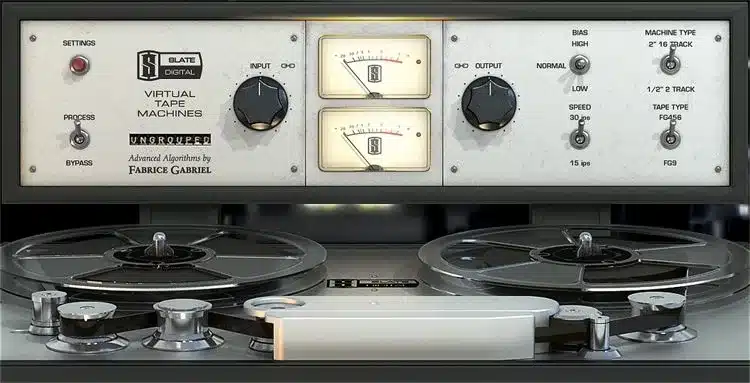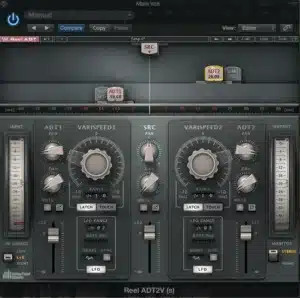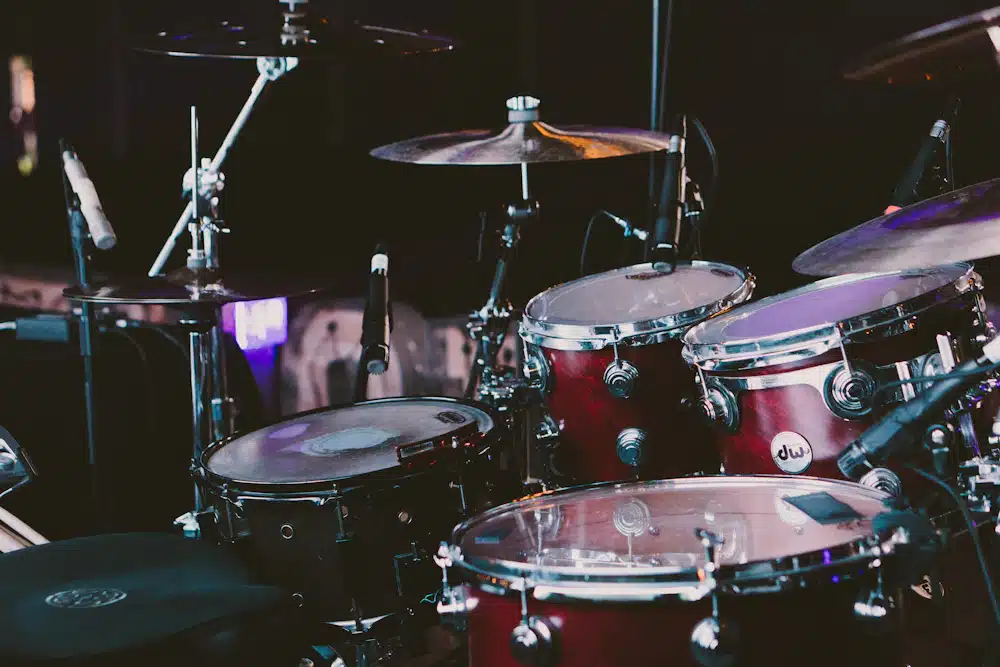Mastering Wide and Impactful Vocals: A Professional’s Guide to Thicker Vocals
As a seasoned mixing and mastering engineer, I’ve spent countless hours in the studio refining the art of vocal production. My name is Matty, and I’m here to share my journey and insights into creating wide, impactful, and thicker vocals. This isn’t just about tweaking knobs and sliders; it’s about understanding the soul of a song and how the vocals can be transformed to resonate with that soul.
The Essence of Vocal Quality in My Mixing
Vocal quality is the cornerstone of a great mix. It’s what gives a song its identity and connects with the listener on a deeper level. In my experience, achieving ‘wide’ and ‘impactful’ vocals is a blend of technical skill and artistic intuition.
When I talk about ‘wide’ vocals, I’m referring to the spatial aspect of the sound. It’s about creating a sense of breadth and dimension that makes the vocal track envelop the listener. ‘Impactful’ vocals, on the other hand, are those that carry emotional weight and clarity, cutting through the mix to deliver the message of the song powerfully.
My Approach to Vocal Quality
- Understanding the Song’s Context: Every track has its unique character and emotional tone. I always start by understanding the song’s context, which guides my approach to vocal mixing.
- Technical Analysis: I analyze the raw vocal tracks, looking for frequency ranges that need enhancement or suppression. This step is crucial for setting the foundation for further processing.
- Emotional Connection: I try to connect with the emotional core of the vocals. This helps me in making decisions that enhance the emotional impact of the track.
- Experimentation: Mixing is an art, and like any art, it requires experimentation. I often try different techniques to see which one complements the vocals best.
Through years of mixing, I’ve learned that there’s no one-size-fits-all approach. Each track demands a unique treatment, and that’s the beauty of this craft.
Techniques for Thicker Sounding Vocals
Achieving thicker sounding vocals is a blend of art and science. Over the years, I’ve developed a set of techniques that consistently deliver richer, fuller vocal tracks. Here’s a breakdown of my approach:
Saturation: The Subtle Art of Warmth
Saturation is my go-to for adding warmth and body to vocals. It’s about simulating the analog warmth that was inherent in older recording equipment. Here’s how I do it:
- Plugin Selection: I often use plugins that emulate tape or tube saturation. Each plugin has its unique character, and I choose based on the vocal’s needs.
- Subtle Adjustments: The key with saturation is subtlety. I usually start with a low setting and gradually increase it until I find the sweet spot where the vocals feel warmer but not distorted.
- Harmonic Enhancement: Saturation adds harmonics to the vocal, which can make it stand out in the mix. This is particularly useful for vocals that need a bit more presence.

Slate Digital Virtual Tape Machine
Virtual Tape Machines: Back to the Classics
Virtual tape machines are another tool in my arsenal for thicker vocals. They emulate the sound of recording to tape, which has a natural compression and warmth.
- Tape Speed: I experiment with different tape speeds. Lower speeds tend to add more warmth and thickness.
- Bias Settings: Adjusting the bias setting can significantly affect the sound. I tweak this to get the right amount of saturation and compression.
- Integration with Digital: The beauty of virtual tape machines is how they blend the analog warmth with the clarity of digital recording. It’s about finding that perfect balance.
Stereo Widening: Expanding the Vocal Space
Stereo widening is a powerful technique to make vocals sound larger than life. It’s not just about making the track louder; it’s about giving it space to breathe.
- Widening Plugins: I use various stereo widening plugins to achieve this effect. Each plugin has its unique way of spreading the sound across the stereo field.
- Mono Compatibility: While widening the stereo field, it’s crucial to ensure that the vocals still sound good in mono. This is important for playback on systems that don’t support stereo.
- Avoiding Over-Widening: Too much widening can make the vocals sound unnatural and disconnected from the rest of the mix. It’s about finding the right balance.
In my journey, these techniques have been instrumental in achieving the vocal sound that artists love. It’s a combination of respecting the traditional methods while embracing the advancements in digital technology.
My Approach to Big and Wide Vocals
Creating big and wide vocals is more than just a technical exercise; it’s about bringing a vision to life. Here’s how I approach this aspect of vocal mixing:

Waves ADT
Automatic Double Tracking (ADT)
Waves ADT is a classic technique that I frequently use to add depth and richness to vocals. It involves creating a slightly delayed copy of the vocal track, which adds a natural chorus-like effect.
- Delay Settings: I typically set a short delay, around 20-30 milliseconds, which is enough to create a sense of depth without noticeable echo.
- Pitch Variation: Slight detuning of the delayed signal, usually around 10 cents, adds to the thickness. This subtle pitch variation makes the vocal sound fuller.
- Blend with Original: The key is to blend this effect with the original vocal subtly. It should enhance the vocal without overpowering it.
Vocal Space Bus
I treat vocals differently than other instruments when it comes to reverb and space. I use a dedicated vocal space bus to create a unique environment for the vocals.
- Selective Reverb: Depending on the song, I choose a reverb that complements the vocal style. For instance, a longer reverb for sustained notes and a shorter, more subtle reverb for faster vocals.
- Compressor and Delay: I often add a compressor before the reverb for more controlled dynamics. A stereo delay can also add to the sense of space.
- Balancing Dry and Wet Signals: The balance between the dry vocal and the processed signal is crucial. I aim for a natural sound where the reverb supports rather than overwhelms the vocal.
Stereo Trick for Wide Vocals
This is one of my favorite tricks for instantly widening vocals. It’s simple yet incredibly effective.
- Stereo Widening Plugin: I use a stereo widening plugin on an aux bus. The S1 Stereo Imager is a personal favorite, but there are many great options out there.
- Compressor for Consistency: I often pair the widener with a compressor to ensure the vocals remain consistent in the mix.
- Liberal Use of Send: I send a significant amount of the vocal signal to this bus. It’s about making the vocals stand out and feel ‘larger-than-life’.
In my experience, these techniques have been game-changers. They transform good vocals into great ones, giving them the space and presence they deserve in the mix.
Integrating Techniques into My Workflow
Integrating these vocal techniques into my mixing workflow has been a journey of discovery and refinement. Here’s how I blend these methods to achieve the desired vocal quality in my projects:
Starting with a Vision
- Understanding the Artist’s Intent: Before I start mixing, I spend time understanding the artist’s vision for the track. This guides my approach to vocal processing.
- Analyzing the Raw Vocals: I listen to the raw vocal tracks in detail, identifying strengths and areas that need enhancement.
Layering Techniques for Depth
- Building a Foundation with Saturation and Tape Emulation: I start by adding warmth and body using saturation and tape emulation. This sets the stage for further processing.
- Enhancing Width with ADT and Stereo Tricks: Next, I focus on creating width and space. Automatic Double Tracking and stereo widening techniques are key here.
- Refining with Vocal Space Bus: I use the vocal space bus to fine-tune the reverb and delay, ensuring the vocals sit perfectly in the mix.
Balancing and Tweaking
- Subtle Adjustments: Mixing is an iterative process. I make subtle adjustments, constantly referring back to the artist’s vision and the emotional tone of the track.
- A/B Testing: I often compare the processed vocals with the original and with reference tracks to ensure I’m on the right path.
- Feedback Loop: Collaboration is crucial. I involve the artist in the process, getting feedback and making adjustments accordingly.
Case Study: Transforming a Vocal Track
In one of my recent projects, I worked on a vocal track that lacked warmth and presence. By applying saturation and tape emulation, I enhanced the body of the vocals. ADT and stereo widening gave the track an expansive feel, making the vocals more engaging. The final touch was a carefully dialed-in reverb on the vocal space bus, which added depth without muddying the mix. The transformation was remarkable – the vocals went from flat and lifeless to vibrant and commanding.
Integrating these techniques into my workflow has not only improved the quality of my mixes but also made the process more efficient and enjoyable.
- Responsive Adjustments: Instead of static EQ settings, I use dynamic EQ to make adjustments that respond to the vocal performance. This keeps the vocals sounding natural and dynamic.
- Parallel Compression for Added Punch: I often use parallel compression to add punch and sustain to the vocals without squashing their dynamics. This technique involves mixing a heavily compressed version of the vocal with the original.
- Harmonic Excitement for Presence: Adding harmonic excitement can bring out the presence and clarity in vocals, especially in the upper midrange frequencies.
Common Pitfalls and How to Avoid Them
- Over-Processing: One of the biggest mistakes is over-processing vocals with too much EQ, compression, or effects. This can strip away the natural character and emotion. The key is subtlety and restraint.
- Ignoring the Context of the Mix: Vocals should always be mixed in context with the rest of the track. Soloing the vocals for too long can lead to decisions that don’t work in the full mix.
- Neglecting Phase Alignment: When using multiple vocal tracks or effects like ADT, phase issues can arise. I always check for phase alignment to ensure the vocals don’t lose their impact.
A Real-World Example
In a recent project, I was mixing a powerful lead vocal that needed to cut through a dense mix. I used dynamic EQ to gently tame the harshness in the upper midrange only when it became too prominent. Parallel compression added body and presence, making the vocal stand out without overpowering the mix. However, the initial mix felt over-processed. I dialed back some of the effects and focused on enhancing the natural tone of the vocal, which made a huge difference. The final vocal sat perfectly in the mix, maintaining its emotional impact and clarity.
These advanced tips and awareness of common pitfalls have been crucial in my growth as a mixing engineer. They’ve allowed me to create vocal mixes that are both technically sound and emotionally compelling.
Conclusion: Embracing the Art of Vocal Mixing
My journey in mastering wide and impactful vocals has been both challenging and rewarding. It’s a process that goes beyond mere technical skills; it’s about understanding the heart of a song and bringing out its best through the vocals.
Summarizing Key Lessons
- The Importance of Context: Every vocal, every song has its unique character. Understanding this context is crucial for making the right mixing decisions.
- Balancing Art and Technique: Mixing is an art supported by technical skills. Finding the balance between these two is key to creating impactful vocals.
- Continuous Learning and Experimentation: The landscape of music production is ever-evolving. Staying open to learning and experimenting with new techniques is vital.
My Encouragement to Fellow Mixers
To those embarking on their journey in vocal mixing, remember that patience and practice are your allies. Don’t be afraid to experiment and make mistakes – that’s where the greatest learning happens. Trust your ears, but also be open to feedback. And most importantly, always serve the song and the artist’s vision.
The Reward of a Mix Well Done
There’s a unique satisfaction in hearing a vocal track come to life in a mix, knowing that you’ve contributed to its transformation. It’s not just about making a vocal sound ‘good’ – it’s about making it feel right, making it resonate with the listener. That’s the true reward of this craft.
Check out the video below to hear some examples!








